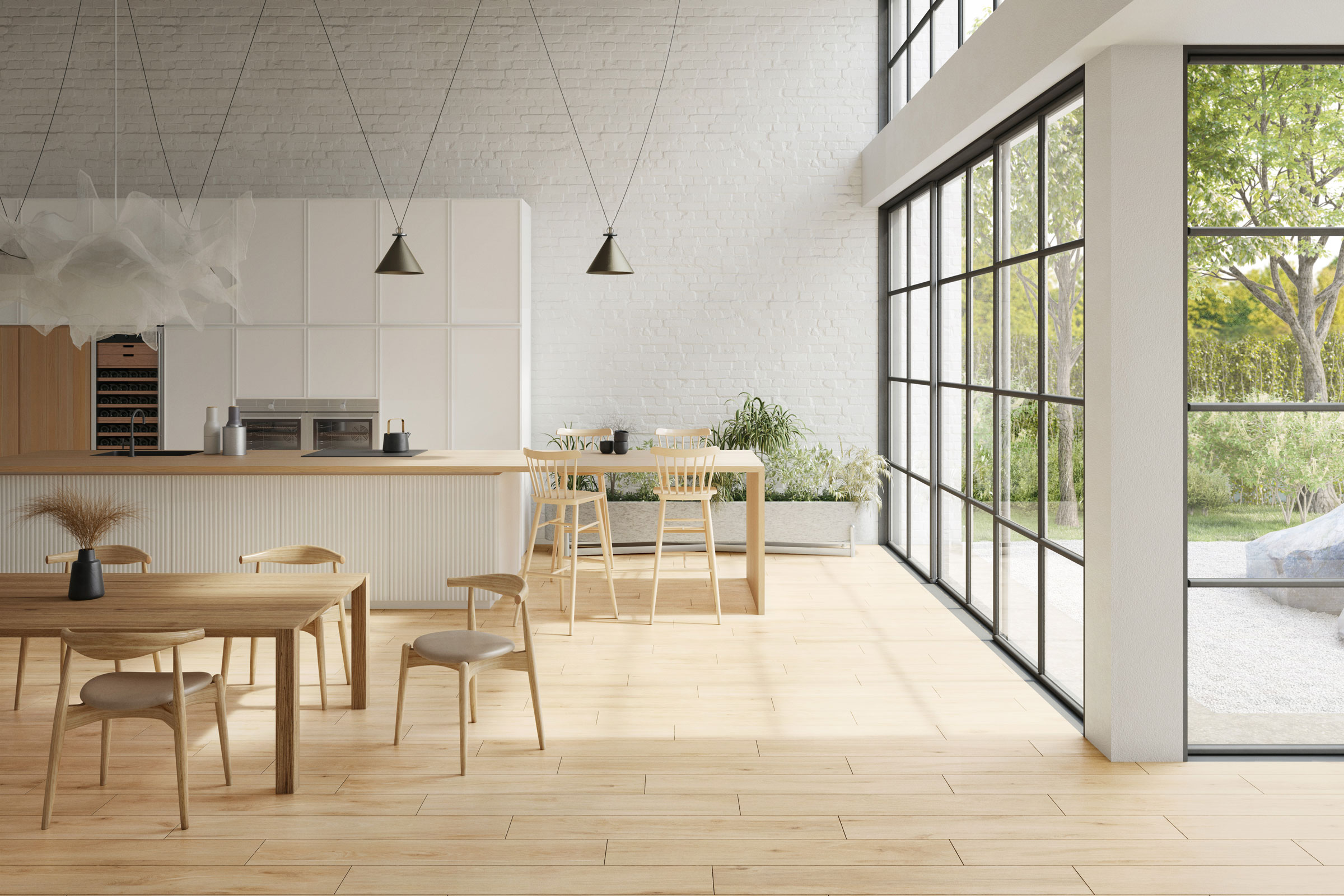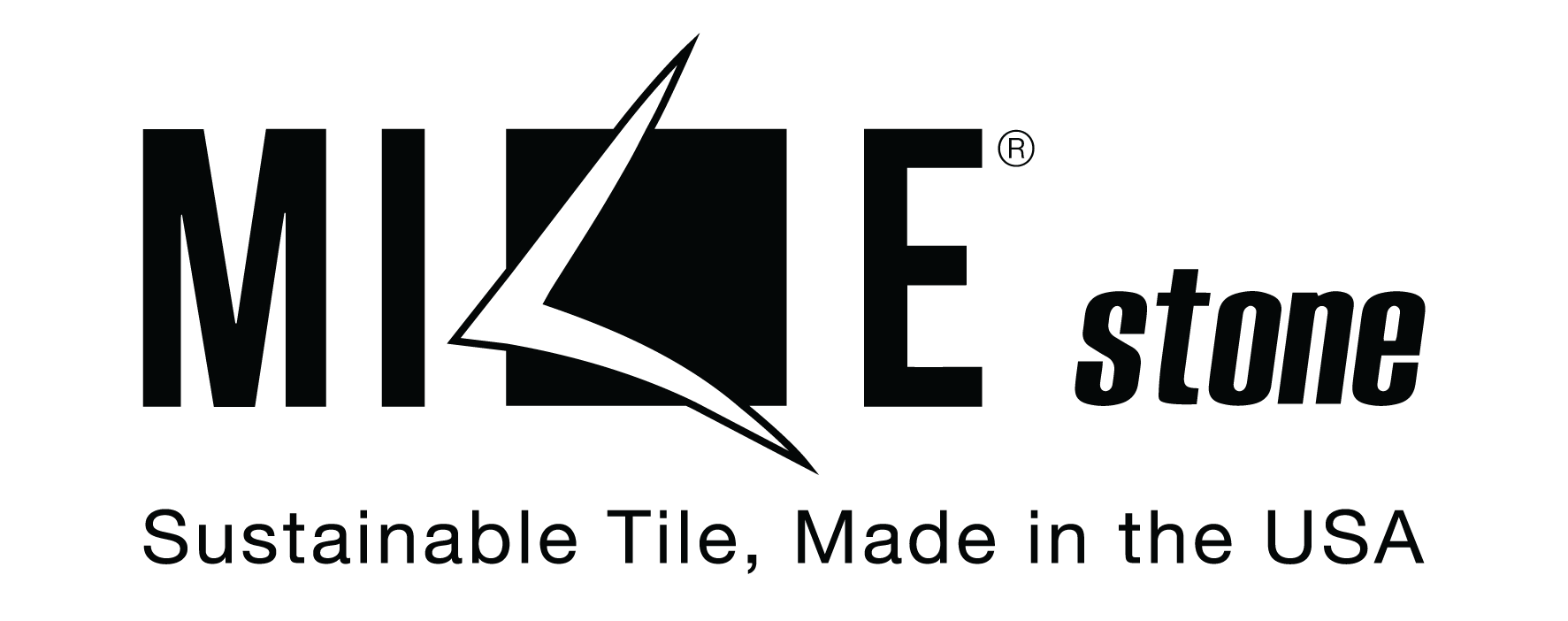Story at a glance:
- Regenerative design is based on holistic thinking and draws inspiration from nature.
- Porcelain tile is manufactured with a wide range of biophilic graphics and finishes.
- Porcelain tile contains the least embodied carbon of any competitive floor covering.
Regenerative design is the newest paradigm in the design space and is working toward overtaking sustainability’s leadership position. Regenerative design in its simplest form is design that goes beyond sustainability with the mantra of “do no harm.” It is based on holistic thinking and draws inspiration from systems and images found in nature. It aims to reconnect and realign humans and their activities with the natural environment, thereby reducing the negative environmental impacts of today’s society while addressing urgent issues such as climate change, the lingering Covid-19 pandemic, and whatever may come next.
For a variety of reasons porcelain tile is uniquely situated among flooring options to play a role in regenerative design. Biophilic design, or the integration of natural aspects into design, is an integral aspect of regenerative design. Porcelain tile is manufactured with a wide range of biophilic graphics and finishes, including stone and wood looks, in a range of neutral, natural colors. Porcelain tile is hygienic, nonporous, and does not support microbial growth. Being nonporous, it is easily cleaned with safe and simple cleaners, not requiring the use of harsh disinfectants or other chemicals. The significant mass of a porcelain tile installation consisting of backerboard, mortar, and tile results in a heat sink in the built space. This becomes a temperature moderator for the space, resulting in reduced heating and cooling energy demands. Porcelain tile’s efficient manufacturing processes and long installed life give it the lowest embodied carbon of any competing flooring type. Let’s look at these important benefits individually.
Biophilic Design
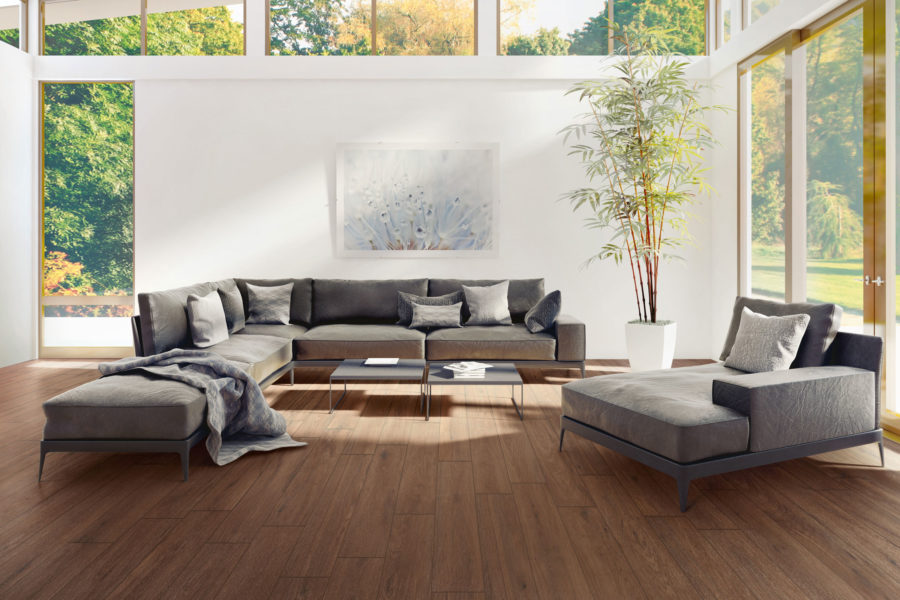
Photo courtesy of MILE®stone
Nature is a foundational source of design inspiration for porcelain tile looks. The introduction of biophilic looks into the built space is a longstanding hallmark of porcelain tile, beginning perhaps with the ivy motifs employed by the ancient Romans. Modern manufacturing methods allow porcelain to mimic a variety of natural materials, from complex stone images to subtle wood graining and texture, or to provide the colors of nature in abstract patterns.
Bringing natural light, colors, or images into the built environment serves as a powerful means to reduce stress and mental fatigue, increase focus, and support an overall sense of well-being. Porcelain tile is capable of being used in both indoor and outdoor settings, allowing for seamless transition from inside to outside, opening more possibilities for the inclusion of nature in any given design.
Exposure to natural elements has been linked to better health outcomes, improved levels of depression and anxiety, improved recovery from stress and illness, and even increased pain tolerance. Thoughtful selection of a porcelain tile floor or wall covering can be an integral component of a broader biophilic design and support the myriad of potential benefits that such a design can bring.
Hygienic
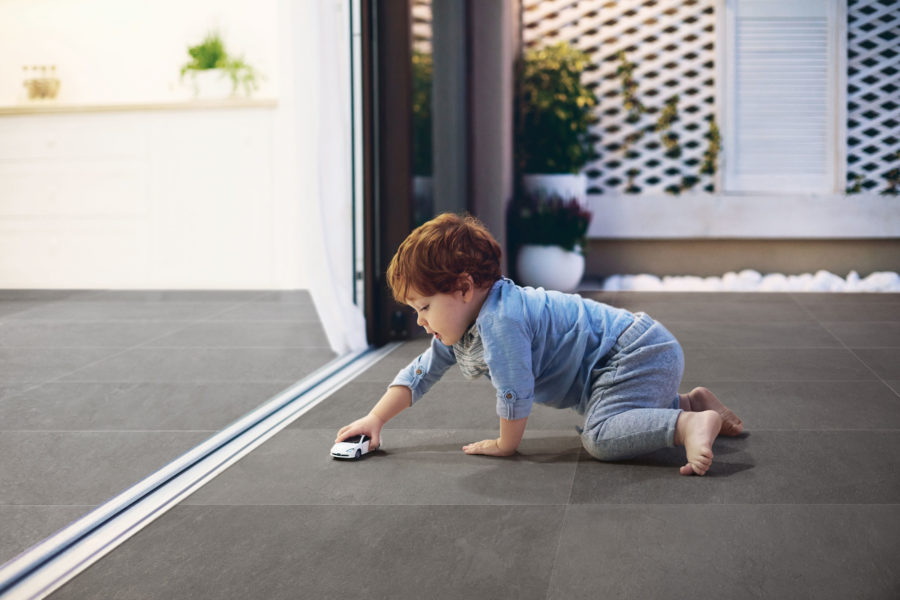
Photo courtesy of MILE®stone
According to the dictionary, hygienic means something is conducive to maintaining health and preventing disease, especially by being clean. Porcelain tile fits this bill perfectly. It is nonporous, so it provides no foothold for mold or other microbes to grow. Using approved installation methods along with modern non-cement grouts provides for a completely waterproof and sanitary installation. Furthermore, porcelain tile does not need harsh chemicals for cleaning. Since there are no places for microbes to hide, cleaning with clear water is usually adequate to leave a cleaned surface. Tougher dirt may require a mild household cleaner. Harsh cleaners, antimicrobials, and disinfectants can be left to areas of high contamination like medical settings.
Porcelain tile also contributes to healthy living spaces in other ways beyond being easy to clean. It does not support microbial growth—particularly mold. Research at Clemson University has found that of sterile flooring samples, including porcelain tile and luxury vinyl tile (LVT), only the LVT supported mold growth and reproduction when inoculated with mold spores. Note that this growth took place without the introduction of a separate food source. Unlike LVT, porcelain tile contains no available carbon or VOC and therefore does not support mold growth. Considering what is known about the toxicity and allergenicity of mold spores, especially for potentially wet applications like kitchens and baths, porcelain tile represents the more healthful choice.
Thermal Benefits
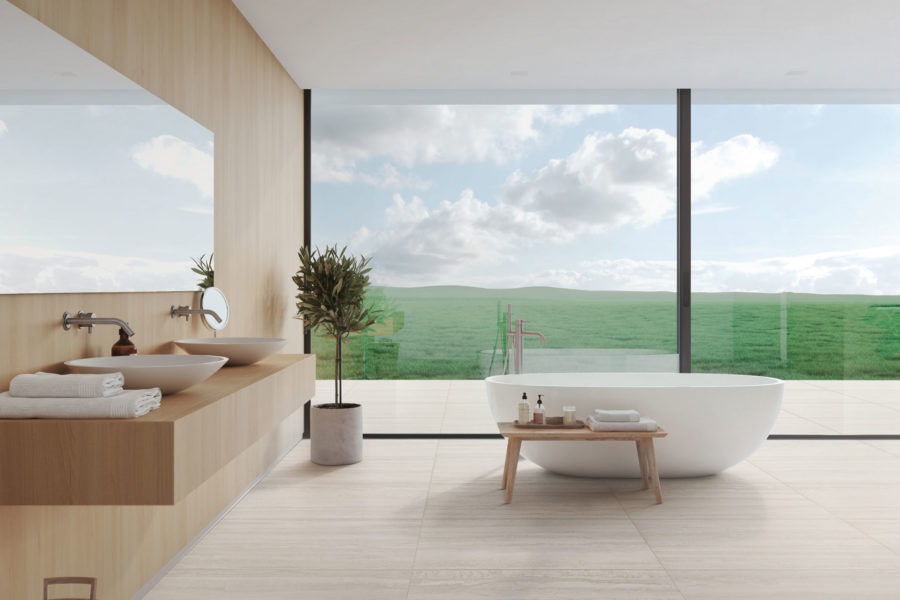
Photo courtesy of MILE®stone
Moderation of temperature swings in the built environment is an important goal for both occupant comfort and reduction of energy demands. An installation of porcelain tile, mortar, grout, and backerboard is a good tool in this regard. It provides a significant thermal mass, which can retain heat and thereby reduce peak heating and cooling demands, helping to moderate temperature swings in the space. This means less work for the HVAC system and more energy savings for the owner.
In addition to cost savings, these energy savings represent a reduction in the operational carbon used by the building during the installed life of the tile system. Intentional design where the tile installation is exposed to southern facing windows to warm it, for example, can maximize the thermal mass benefits of a porcelain tile installation.
Under floor radiant heating is a useful tool to provide thermal comfort to the built space. This idea of thermal comfort is a component of the International Well Building Institute’s WELL standard. Thermal comfort is a significant factor in overall occupant satisfaction. What is more comfortable than stepping on a warm tile floor when you get out of the shower? Multiple technologies allow this subfloor heat to be generated electrically, which reduces the operational carbon of the building while enhancing the overall occupant experience. The dense thermal mass of a tile floor holds this heat, increasing its efficient use in much the same way that it helps to balance thermal loads as was earlier discussed.
Embodied Carbon
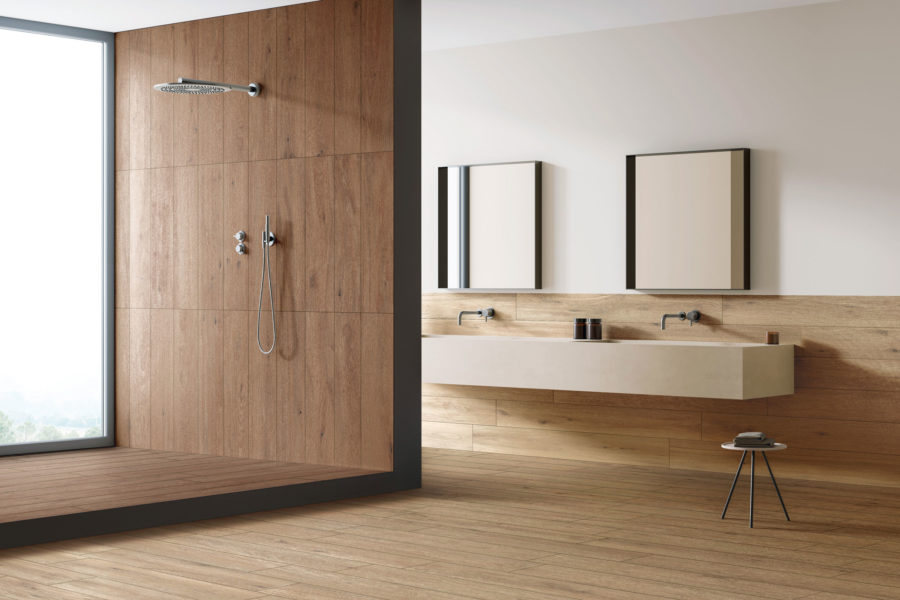
Native tile. Photo courtesy of MILE®stone
Embodied carbon is the sum of all the greenhouse gas emissions (mostly carbon dioxide) resulting from the mining, processing, manufacturing, transportation, and installation of building materials. The global warming emissions associated with these materials, along with emissions associated with construction itself, are the embodied carbon footprint of design and construction. When looking at total greenhouse gas emissions for new buildings built over the next 10 years—the critical period for action to address the global climate emergency—the AIA estimates approximately 80% will come from embodied emissions. Lowering embodied carbon emissions is now even more urgent than lowering operating emissions, which comprise the remaining 20%.
Porcelain tile contains the least embodied carbon of any competitive floor covering. This is partly due to its long useful life, thus avoiding replacement. Thoughtful selection of timeless porcelain tile designs results in a floor or wall covering that can easily last the life of the building, resulting in reduced carbon emissions from manufacturing, construction, demolition, and waste management. Smart design choices can greatly reduce this footprint.
Renovating, remodeling, and repurposing existing buildings almost always generates significantly fewer embodied emissions than new construction. Finding creative ways to reuse existing buildings is an increasingly important strategy for reducing embodied emissions. The urgent need to reduce greenhouse gas emissions in the short term means that the calculus for saving rather than demolishing an existing building has changed and is now weighed much more heavily against demolition. Reusing buildings also offers the opportunity to reduce current operating emissions from existing building through deep energy upgrades, so they can contribute in the long term as well as the short term. Porcelain tile is readily used in renovation projects. Leveling mortars, which may be necessary in a remodel, have very low embodied carbon, resulting in a complete installation with significantly less embodied carbon than carpet or LVT.
Carbon Neutral Porcelain Tile
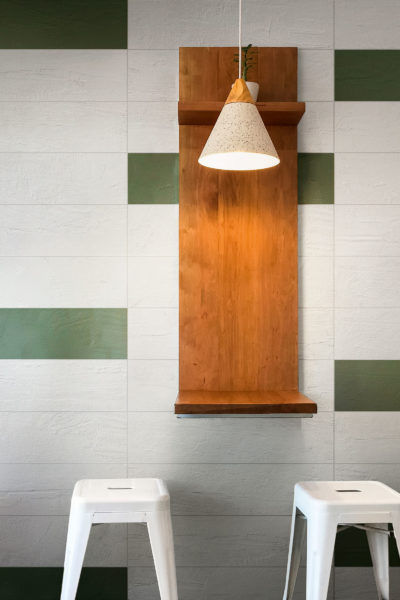
In addition to production-related carbon reductions from efficiency improvements, renewable energy installation and the like, a progressive porcelain tile manufacturer can produce a carbon neutral tile, at least partially, through the purchase of certified carbon offsets. Carbon offsets are a reduction in GHG emissions—or an increase in carbon storage (e.g., through land restoration or the planting of trees)—that is used to compensate for emissions occurring elsewhere.
A carbon neutral flooring material can substantially contribute to lower embodied carbon in a building. A responsible approach to carbon neutrality will include actual carbon reductions. These actual reductions can be achieved through a variety of ways, ranging from energy efficiency improvements, onsite generation of renewable energy, or resourcing raw materials from geographically closer locations, among others. Speak with your tile manufacturer to see what steps they are taking toward carbon neutrality.
As we fall down the rabbit hole that is climate change, it is easy to become numb to the challenge due to the many interrelated and seemingly insurmountable problems we encounter. The climate crisis has been exacerbated by a multitude of small, poor choices, but it is time to take responsibility and turn the tide with a flood of small, positive ones.
Summary
Porcelain tile is unique among flooring options in that its characteristics support regenerative design in so many ways. Tile has a long history with biophilia that has flourished over time and continues to be a hallmark of the material. Its density gives it mass to support thermal balancing, and that same density provides the tile with extremely low porosity, resulting in a hygienic, easily cleaned floor that does not support microbial growth. This density also gives porcelain tile significant wear resistance, providing an exceptionally long service life that results in the lowest embodied carbon of all competing flooring types. This suite of complementary characteristics makes porcelain tile an obvious choice to strengthen regenerative design objectives.

